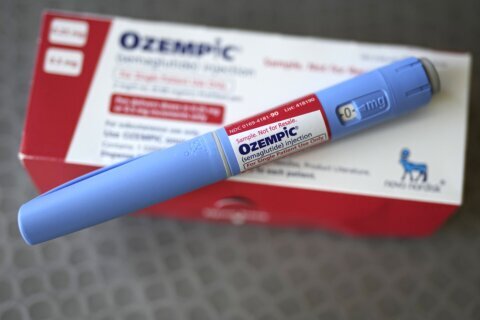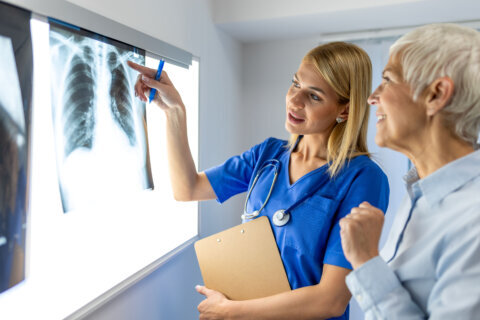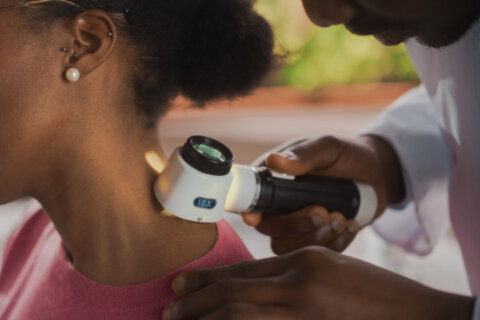Like many, Kate Lyons, 30, of Portland, Oregon, likes to have a cold one after a run.
A former resident of Providence, Rhode Island, she’s joined friends for several Craft Brew Races, 5-kilometer (or slightly over 3-mile) jaunts run mainly on the East Coast that are followed by a craft brew festival. It’s a great way to be active and social, she says.
Such running-plus-drinking events tap into a long-standing tradition to imbibe after — and sometimes even intermittently during — activity. Not a new concept, even the Tarahumara people native to the Copper Canyons in Mexico, famed for their running prowess and featured in the popular book “Born to Run,” are known to put back some Tecate beers as part of their active diet, author Christopher McDougall points out. Lyons, a digital health analyst, says she thinks of that in her own personal justification for tipping back after a run.
From New England to California, and around the country where being active outdoors and brewing and winemaking are rooted in the culture, alcohol and exercise often comingle. “Our generation seems to appreciate the combination of a physical activity with enjoying a good beer or two after,” Lyons says. What’s more, where most adults in the U.S. drink alcohol at least occasionally — and many drink more than the recommended max of one to two drinks daily for women and men, respectively — adding activity into the equation may help counterbalance possible long-term ill effects from imbibing.
[See: The 10 Best Exercises You Can Do for the Rest of Your Life.]
In the most comprehensive study of its kind, published in September in the British Journal of Sports Medicine, researchers from Australia evaluated whether the long-term mortality risks associated with Western drinking habits could be offset, at least in part, by physical activity. The research evaluated British survey data for more than 36,000 men and women — from those who reported they never drank to occasional drinkers to individuals who drank at levels higher than recommended. Researchers then looked at participants’ reported activity levels and death rates during a follow-up period of about a decade on average.
They found that being at least as active as recommended by minimum United Kingdom and U.S. public health physical activity guidelines, or the equivalent of at least 2.5 hours of moderate intensity activity per week — like brisk walking — reduced the effect of alcohol consumption on death rates from all causes, including cancer. Physical activity appeared to completely wipe away the association between alcohol and cancer death risk, said Emmanuel Stamatakis, the study’s senior author and an associate professor of physical activity and health at the University of Sidney in Australia, in an email. That effect was seen for those who drank up to hazardous levels of alcohol, he says, or up to 20 U.S. standard drinks per week for women and up to 28 standard U.S. drinks for men — where a standard drink would be a 12-ounce beer (with 5 percent alcohol) or a 5-ounce glass of wine (with 12 percent alcohol). “Physical activity also changed the association between alcohol and all-cause mortality in a very similar manner,” he says.
However, there’s no evidence heavy drinkers can overcome their risk with exercise. “It is worth noting that physical activity did not seem to offset mortality risks for those drinking at harmful levels — that is over 20 U.S. standard drinks per week for women and over 28 standard US drinks per week for men,” Stamatakis says.
[See: 7 Health Risks of Binge Drinking You Can’t Ignore.]
For those who exercise regularly, tipping back in moderation might even help reduce heart disease risk. “Our study showed that among physically active participants, occasional alcohol consumption (defined as being a drinker but not drinking every week) may have cardio-protective benefits. There was an almost 50 percent reduction in [cardiovascular disease] mortality risk in the physically active occasional drinkers groups, compared to physically active never drinkers,” Stamatakis says. “But such benefits of occasional consumption were not present among physically inactive participants.” And therein lies the rub: Most Americans don’t meet public health guidelines for activity, and a sedentary lifestyle combined with alcohol can be a decidedly unhealthy and even lethal mix.
In addition — often lost in the buzz about the latest research on the benefits of consuming alcohol — the 2015-2020 U.S. Dietary Guidelines don’t recommend that individuals who don’t drink alcohol start drinking for any reason. Stamatakis suggests those who do drink take breaks from consuming alcohol, for weeks at a time if possible. “Even moderate regular weekly consumption (within recommended amounts) is associated with increased cancer mortality risk in inactive people,” he says. While, conversely, occasional drinking — not weekly — may be linked with cardiovascular benefits among active people, he adds.
In the immediate term, those wishing to cool off after working out with an ice cold, refreshing, mountain vista-vision-inducing beverage (or whatever image it may conjure) may be best served to think about the icy cold streams tumbling down those rocky flanks first. Hydrate with water and/or a sports drink with electrolytes, and refuel with food first, says Stella Volpe, registered dietitian nutritionist and professor and chair of the department of nutrition sciences at Drexel University in Philadelphia. Then, if you want to toast your effort: “Enjoy that glass of wine or bottle of beer that you can also have as you continue to consume food,” she recommends. Don’t let a work hard, play hard mentality cancel out your fitness efforts, either. Research shows that drinking to excess can interfere with recovery and the body’s ability to build muscle after a workout.
[See: 14 Ways Alcohol Affects the Aging Process.]
Strike a balance instead, and experts say if you find yourself sedentary and idly angling for a drink, go for the runner’s high instead. “Exercise that gets people out of breath or sweaty will have lots of extra benefits, including that euphoric ‘feel good’ effect that is hangover-free, does not impair people’s ability to drive, speak or have sex, and does not increase long-term risk for cancer and other chronic disease,” Stamatakis says. “Physical activity does quite the opposite, in fact,” he adds, reducing the risk for many chronic conditions. And that’s something to celebrate — and another reason many do with a brew after a run. “You feel really good about yourself,” Lyons says. “[You can] reflect on what you’ve just accomplished — and chill out.”
More from U.S. News
7 Exercises That Trainers Wouldn’t Be Caught Dead Doing
7 Exercises You Can Do Now to Save Your Knees Later
8 Reasons Running Now Will Help You Later in Life
Is Your Running Habit Deserving of a Beer? originally appeared on usnews.com







